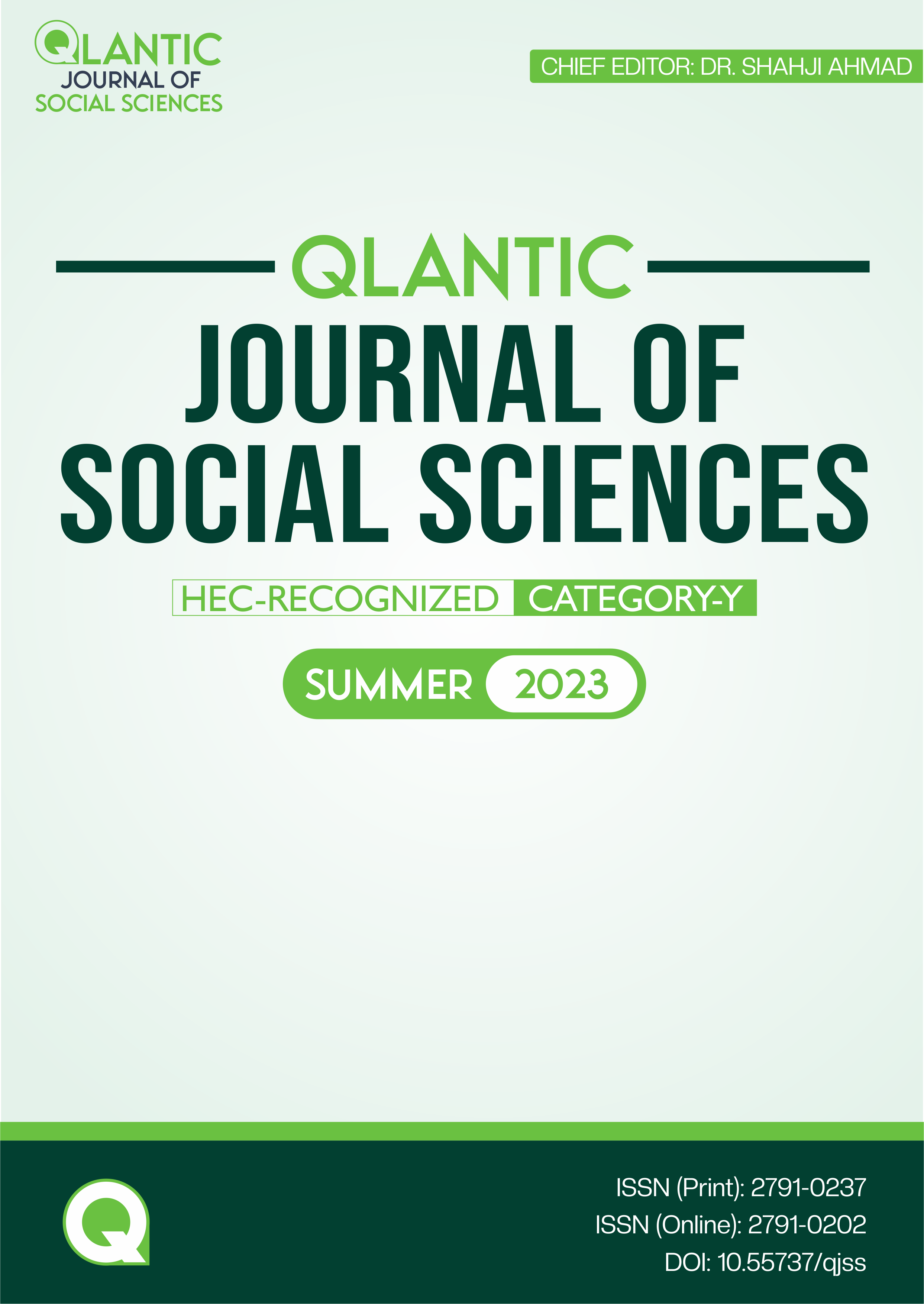An Analysis of Online Content Marketing through YouTube Vlogging in Pakistan
DOI:
https://doi.org/10.55737/qjss.241421816Keywords:
Online Marketing, Content Analysis, YouTube Vlogs, Vlog Business MarketingAbstract
This study is conducted to present the importance of Vlog marketing in Pakistan, which was started during the pandemic with the help of Zaid Ali's YouTube channel named Zaid Ali TV Logs. During the pandemic, the world turned to online as well, and Vloggers had more opportunities to grow their channels and gain more audience and followers just because of free time during the pandemic. The researchers analyzed the Vlogs in the light of business aspects. The Vlogs have some paid promotions, and the researchers focused on that thing to introduce the Vlog marketing or influencer markets in Pakistan. The Netnopraphy method is used for research and collection of related data. In this study, we selected ten random videos from one Pakistani YouTube Vlogger named Zaid Ali, which was uploaded during the pandemic, and after that, the online marketing business flourished in Pakistan. Each video has some marketing aspects in it. Because the most popular vlogs tend to receive a wide range of comments. Furthermore, the most recent videos and their comments were examined to ensure that the data was current and relevant. Through this study, people will be able to understand the benefits of YouTube Vlogging. This research will be beneficial for the future of online and Vlog marketing in Pakistan.
References
Ali, M. Y., Khawaja, W. S., & Bhatti, R. (2019). YouTube usage of faculty of an engineering University of Karachi, Pakistan: Implications of media literacy through librarian. International Information & Library Review, 51(4), 328-337. https://doi.org/10.1080/10572317.2019.1669938
Barry, A. E., Johnson, E., Rabre, A., Darville, G., Donovan, K. M., & Efunbumi, O. (2014). Underage access to online alcohol marketing content: A YouTube case study. Alcohol and Alcoholism, 50(1), 89-94. https://doi.org/10.1093/alcalc/agu078
Duffett, R. (2020). The YouTube marketing communication effect on cognitive, affective and behavioural attitudes among Generation Z consumers. Sustainability, 12(12), 5075. https://doi.org/10.3390/su12125075
Gay, R., Charlesworth, A., & Esen, R. (2007). Online marketing: A customer-led approach. Oxford University Press.
Habes, M., Salloum, S. A., Elareshi, M., Ganji, S. F. G., Ziani, A. K., & Elbasir, M. (2020, December). The Influence of YouTube Videos on ELA During the COVID-19 Outbreaks in Jordan. In 2020 Sixth International Conference on e-Learning (econf) (pp. 133-138). IEEE.
Hoekstra, J. C., & Leeflang, P. S. (2020). Marketing in the era of COVID-19. Italian Journal of Marketing, 2020(4), 249-260. https://doi.org/10.1007/s43039-020-00016-3
Ismail Toor, S., & Ahmed, B. (2021). Impact Of Social Apps (Twitter, Facebook And YouTube) On Journalistic Culture: An Online Survey Of Working Journalists In Pakistan. Journal of Media Studies, 36(1). http://journals.pu.edu.pk/journals/index.php/jms/article/view/4028
Khan, Yang, Shafi, & Yang. (2019). Role of social media marketing activities (SMMAs) in apparel brands customer response: A moderated mediation analysis. Sustainability, 11(19), 5167. https://doi.org/10.3390/su11195167
Laguna, L., Fiszman, S., Puerta, P., Chaya, C., & Tárrega, A. (2020). The impact of COVID-19 lockdown on food priorities. Results from a preliminary study using social media and an online survey with Spanish consumers. Food Quality and Preference, 86, 104028. https://doi.org/10.1016/j.foodqual.2020.104028
Li, H. O., Bailey, A., Huynh, D., & Chan, J. (2020). YouTube as a source of information on COVID-19: A pandemic of misinformation? BMJ Global Health, 5(5), e002604. https://doi.org/10.1136/bmjgh-2020-002604
Moon, H., & Lee, G. H. (2020). Evaluation of Korean-language COVID-19–related medical information on YouTube: Cross-sectional Infodemiology study. Journal of Medical Internet Research, 22(8), e20775. https://doi.org/10.2196/20775
Okpara, C. V., Anselm, A. U., Felix, T. O., Omowale, A., & Gever, V. C. (2021). The moderating role of colour in modelling the effectiveness of COVID-19 YouTube animated cartoons on the health behaviour of social media users in Nigeria. Health Promotion International, 36(6), 1599-1609. https://doi.org/10.1093/heapro/daab001
Owen, R., & Humphrey, P. (2009). The structure of online marketing communication channels. Journal of Management and Marketing Research, 2, 1.
Rashid, M., & Farooq, U. (2020). Evolution of Vlogging in Pakistan and gender participation. SSRN Electronic Journal. https://doi.org/10.2139/ssrn.3628545
Shankar, V., & Batra, R. (2009). The growing influence of online marketing communications. Journal of Interactive Marketing, 23(4), 285-287. https://doi.org/10.1016/j.intmar.2009.07.006
Sheth, J. (2020). Impact of COVID-19 on consumer behavior: Will the old habits return or die? Journal of Business Research, 117, 280-283. https://doi.org/10.1016/j.jbusres.2020.05.059
Wu, K. (2016). YouTube marketing: Legality of sponsorship and endorsements in advertising. JL Bus. & Ethics, 22, 59. https://www.scinapse.io/papers/293128556
Zavodna, L. S., & Pospisil, J. Z. (2017). YouTube as a new means of marketing communication. Communications - Scientific letters of the University of Zilina, 19(2), 159-165. https://doi.org/10.26552/com.c.2017.2.159-165




